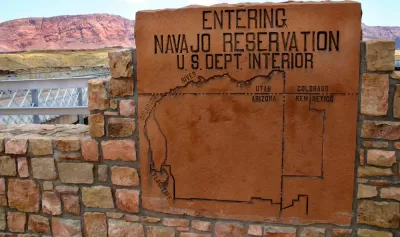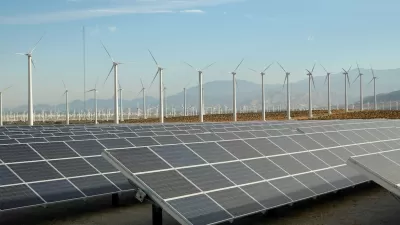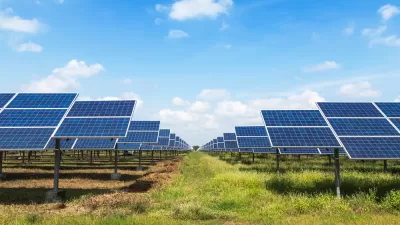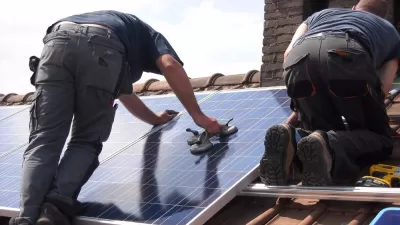Native American leaders in the Southwest want to ensure their communities have a voice, and an opportunity for well-paying jobs, in renewable energy projects on Native land.

As the United States prepares to transition its energy supply to renewable sources, writes Carl Segerstrom, leaders of Native communities that have for decades borne the brunt of fossil fuel-based energy production are working to ensure that they have a say in how the transition affects their regions and local residents.
According to an analysis released last year, transitioning to renewable fuels will create jobs for Native communities in New Mexico, Nevada, and Colorado. "Fossil fuel jobs will be lost, but the studies found that the investments to decarbonize would create large numbers of jobs relative to business as usual." The analysis included recommendations for creating sustainable, career-track jobs and mandating diverse hiring practices.
Despite the transition to new energy sources and technologies, most new jobs will be in traditional trades such as electricians, carpenters, and mechanics, expanding the number of jobs in general trades rather than specialized "green" niche work. As renewable industries create more well-paying careers, Navajo leaders like Joseph F. Hernandez, the Diné energy organizer for the NAVA Education Project, hope that "future generations can expand agriculture and diversify the local economy, rather than be forced to rely on industries that destroy the health of the land and people."
FULL STORY: Building equity into the renewable energy transition

Alabama: Trump Terminates Settlements for Black Communities Harmed By Raw Sewage
Trump deemed the landmark civil rights agreement “illegal DEI and environmental justice policy.”

Study: Maui’s Plan to Convert Vacation Rentals to Long-Term Housing Could Cause Nearly $1 Billion Economic Loss
The plan would reduce visitor accommodation by 25% resulting in 1,900 jobs lost.

Planetizen Federal Action Tracker
A weekly monitor of how Trump’s orders and actions are impacting planners and planning in America.

This Toronto Suburb Has More Bus Riders Than Columbus, Ohio
Brampton, Ontario used gradual improvements in service to prove that if you build it, they will ride.

Paris Bike Boom Leads to Steep Drop in Air Pollution
The French city’s air quality has improved dramatically in the past 20 years, coinciding with a growth in cycling.

Why Housing Costs More to Build in California Than in Texas
Hard costs like labor and materials combined with ‘soft’ costs such as permitting make building in the San Francisco Bay Area almost three times as costly as in Texas cities.
Urban Design for Planners 1: Software Tools
This six-course series explores essential urban design concepts using open source software and equips planners with the tools they need to participate fully in the urban design process.
Planning for Universal Design
Learn the tools for implementing Universal Design in planning regulations.
Smith Gee Studio
Alamo Area Metropolitan Planning Organization
City of Santa Clarita
Institute for Housing and Urban Development Studies (IHS)
City of Grandview
Harvard GSD Executive Education
Toledo-Lucas County Plan Commissions
Salt Lake City
NYU Wagner Graduate School of Public Service





























